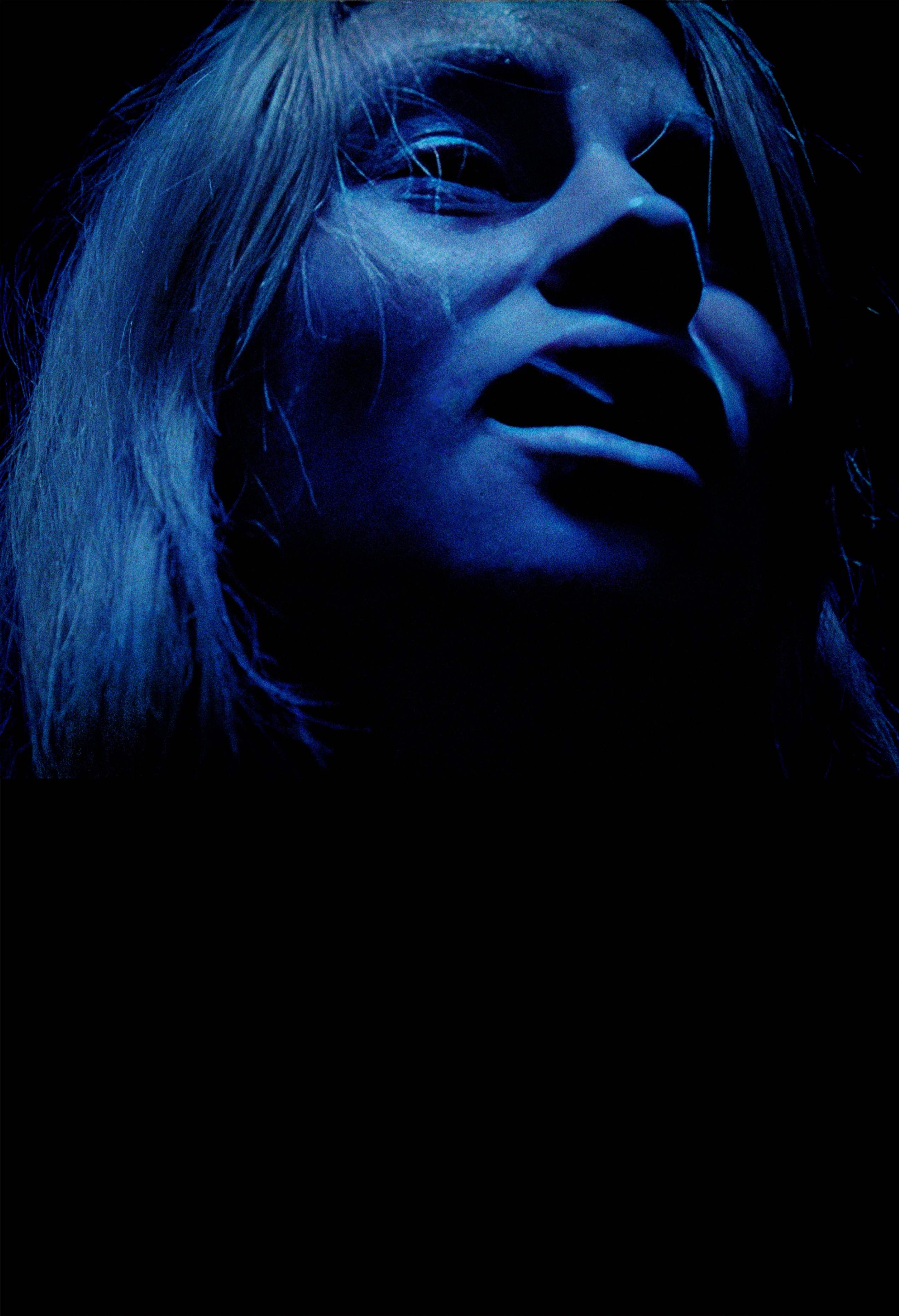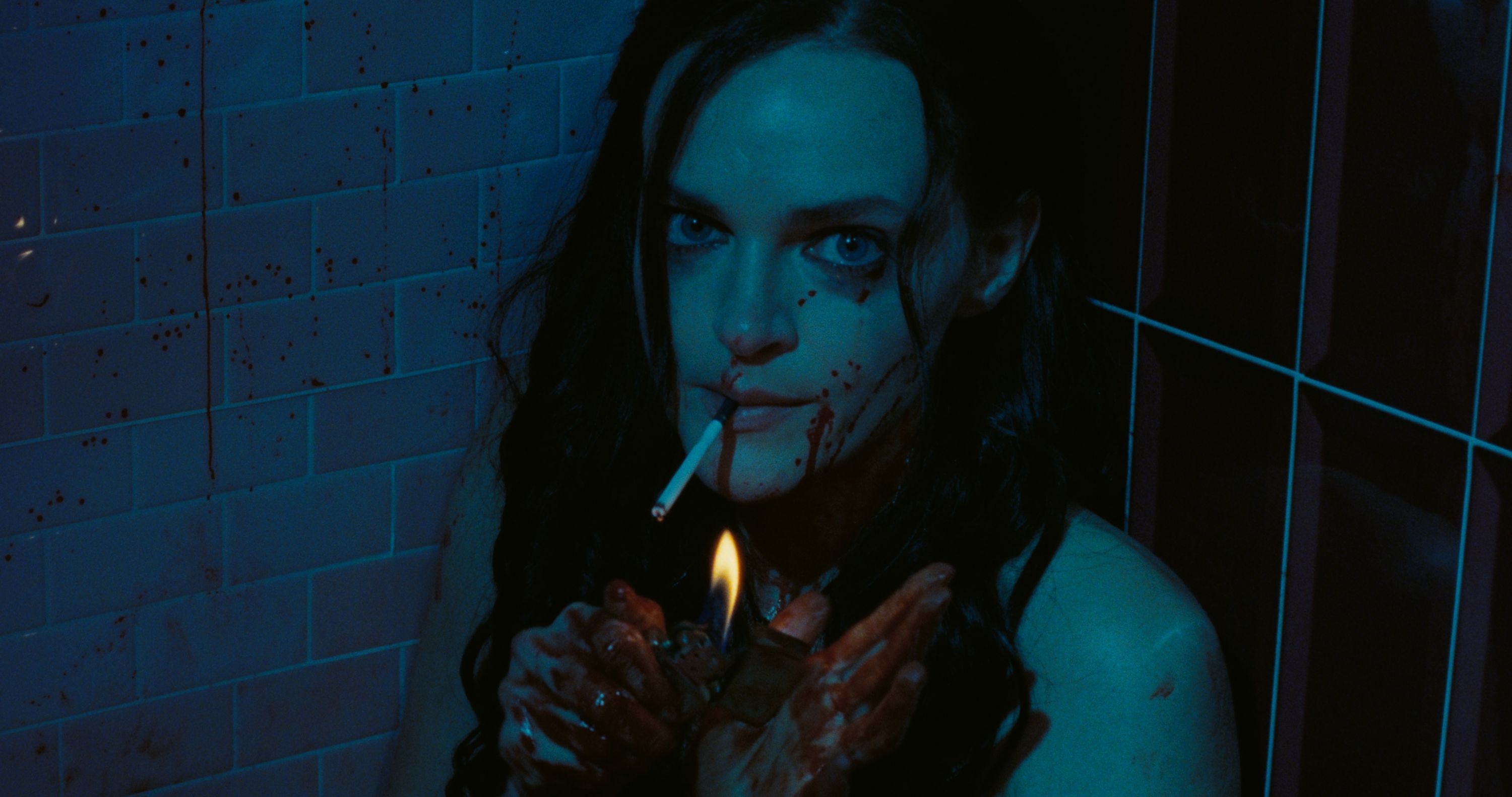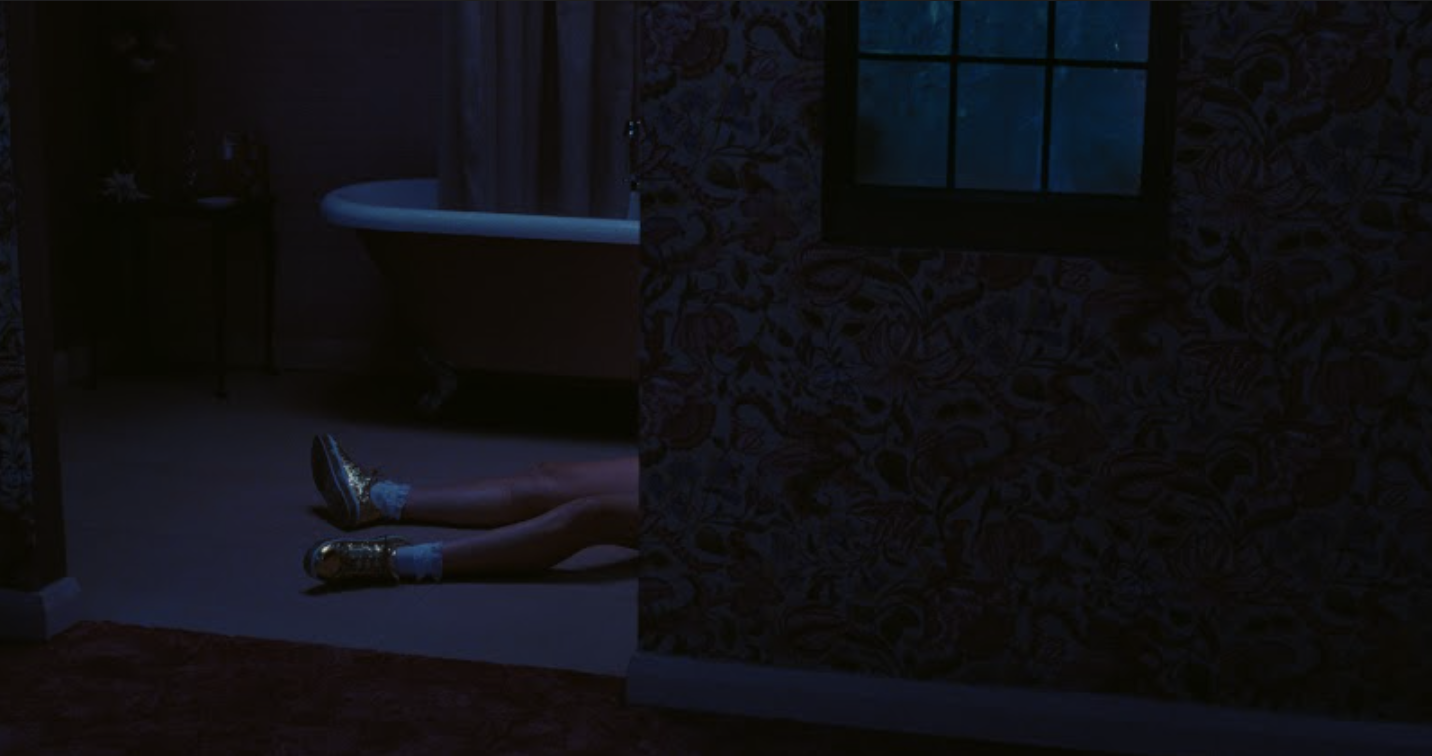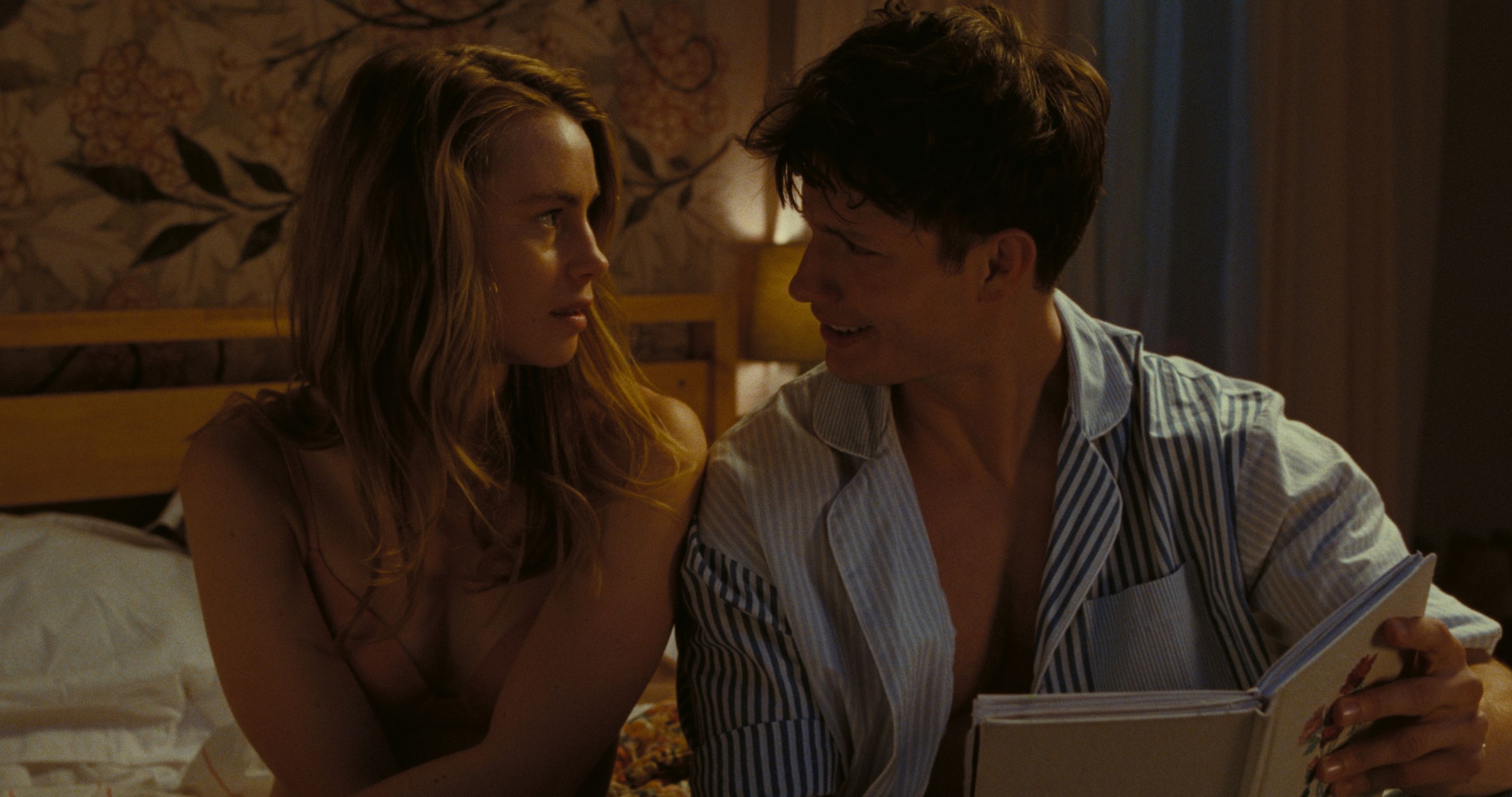
Where Horror Gets Studied, Skewered, and Celebrated.
Newest articles and reviews
(Fantasia Fest 2025 Review) Disembodied in Pink: Dissociation and the Horror of Women's Healthcare in Julie Pacino's I LIVE HERE NOW

By. Professor Horror
What if your body wasn’t yours anymore? Not in the metaphorical, theoretical sense, but viscerally, visually, and inescapably. Making its world premiere at Fantasia International Film Festival 2025, Julie Pacino’s debut feature I LIVE HERE NOW isn’t just a surrealist nightmare about pregnancy, but it’s a sensory dive into the fractured psyche of a woman trying to escape her own flesh. The film doesn’t follow a traditional narrative structure, instead unfolding as an extended metaphor about trauma and bodily autonomy. Rose tumbles down the rabbit hole, and we witness the strange, isolating wonderland she’s trapped inside. And in a cinema landscape where surrealism often feels performative or overdetermined, Pacino delivers something rare. Set almost entirely within the dreamlike, velvet-laced walls of the Crown Inn, I LIVE HERE NOW follows Rose (Lucy Fry), a struggling actress who, on the cusp of a career breakthrough, finds herself unexpectedly pregnant. But this is no miracle because Rose has long believed herself infertile after a traumatic childhood surgery. So, her reaction isn’t joy…it’s collapse.
That collapse takes shape in the film’s stunning and unsettling camera work. In moments of distress, the camera doesn’t just observe Rose, but it fragments her. It lingers on isolated body parts: her legs trembling in stirrups, her stomach under clinical lights, her bruised arms held too tightly. The framing deliberately avoids showing her full body during these scenes of medical and sexual trauma, as though her sense of self has been forcibly dismantled, and the effect is chilling. Rose’s consciousness splinters from her form, as if trying to escape the memories of forced sterilization or birthing procedures she never consented to. We’re not just witnessing her disassociate, but we’re being pulled into that dissociation with her. After fleeing her boyfriend’s home and acquiring an abortion pill, Rose checks into the Crown Inn, which is a surreal, hyperfeminine hotel where time and identity seem to dissolve.

As she navigates the bizarre and symbolic interactions with the other women staying there, she begins to lose grip on reality, confronting memories, hallucinations, and the lingering trauma of her medical past. There, she encounters three women: Sid (Sarah Rich), Ada (Lara Clear), and Lillian (Madeline Brewer) who seem to reflect fractured versions of herself. Each of these women draws Rose into strange, emotionally charged interactions that blur the line between memory, projection, and dream. Sid tries to care for Rose like a well-meaning but naive child, fixated on rules and routines that make little sense. Ada offers comfort laced with passive control, often speaking in cryptic platitudes while drinking heavily. Lillian, by contrast, challenges Rose directly as she mocks her hesitation, confronts her desires, and pushes her toward painful self-recognition. These relationships aren’t just surreal…they stage internal conflicts that Rose hasn’t yet faced aloud: fear, shame, anger, and the pressure to perform wellness and femininity.

Pacino and cinematographer Aron Meinhardt use fragmentation to reflect how Rose is alienated from her own body, which is an experience shaped not just by trauma, but by the systems meant to care for her. In I LIVE HERE NOW, women’s healthcare isn’t portrayed as supportive, but instead it’s a maze of coercion and control, where autonomy is constantly undermined. This aligns with Pacino’s deliberate use of the “cinema of isolation,” drawing from films like Repulsion, 3 Women, and Persona, which center characters who are emotionally or psychologically cut off from others and often marked by some form of disability. These films explore how trauma and social pressure become disabling forces, confining characters to enclosed spaces or fractured states of mind. In I LIVE HERE NOW, Rose’s isolation is both physical and psychological: she escapes to the Crown Inn during a crisis, but she’s also mentally detached, dissociated from her body and memories. The hotel becomes a visual metaphor for that internal collapse. Pacino reinforces this through framing, often placing Rose alone in oversized, hyper-stylized spaces, while other characters appear distant, dreamlike, or unreal. In particular, the male figures who bookend the pregnancy, the baby daddy (Matt Rife) and the doctor, are never really present with Rose. They exist in cutaways, off-screen dialogue, or eyeline matches. It’s as if their impact on her life is massive but unearned because they trigger life-altering consequences, then vanish before taking responsibility for them. This isn’t a coincidence. It’s a direct commentary on how reproductive violence often operates: impersonal, clinical, and entirely extractive. Men inflict pregnancy, whether biologically, systemically, or ideologically, and then vanish, leaving women alone to navigate the consequences. They haunt the story like bureaucratic phantoms, present only long enough to say “you’re pregnant” or “this is your problem now.” Pacino visualizes this abandonment by isolating Rose in the frame, emphasizing that whatever has been done to her body, she must now endure alone.

What I LIVE HERE NOW adds is a focus on reproductive trauma. Rose’s relationship with her body is filtered through horror tropes like liminal architecture, disappearing objects, haunting sound design, but the core of her fear isn’t some unknowable monster. It’s that her body might obey someone else’s will. A boyfriend too dull to comprehend that pregnancy is not a plot twist, but a transformation. A doctor who delivers the news like he’s reading a lab result. And a boyfriend’s mother (played with chilling control by Sheryl Lee) who treats the fetus as family property, asserting ownership over Rose’s body without hesitation. Scenes in which Rose tries to assert boundaries are met with confusion, silence, or passive-aggressive dismissal, emphasizing just how alone she is, even in supposed moments of care. And while reviewers have rightly praised Lucy Fry’s performance (which is well deserved), there’s one scene that encapsulates the film’s entire thematic thesis: Sheryl Lee (forever linked to violated innocence through her role as Twin Peaks’ Laura Palmer) physically abuses Matt Rife’s character. It’s a metatextual uppercut, as if one generation of feminine trauma is finally lashing back. Call it the trauma cycle breaking. Call it Laura Palmer punching patriarchy. Either way, it’s deeply satisfying.

I LIVE HERE NOW isn’t a perfect film. It occasionally stumbles under the weight of its allegory, and some surrealist beats feel more stylish than earned. But what Pacino has achieved (especially in her formal control) is nothing short of remarkable. Her use of close-ups, color, and character framing doesn’t just reflect the themes of bodily autonomy, it actively creates and expresses it onscreen. As debut features go, I LIVE HERE NOW is a bold, unnerving, and at times overwhelming film. But it earns its strangeness. Pacino doesn’t just ask what happens to a woman haunted by how others treat her body, she shows us what it feels like to live in that constant state of violation and control. And for that, I’m already booking my return visit to the Crown Inn.
Grubby's Hole
About Professor Horror
At Professor Horror, we don't just watch horror: we live it, study it, and celebrate it. Run by writers, critics, and scholars who've made horror both a passion and a career, our mission is to explore the genre in all its bloody brillance. From big-budget slashers to underground gems, foreign nightmares to literary terrors, we dig into what makes horror tick (and why it sticks with us). We believe horror is more than just entertainment; it's a mirror, a confession, and a survival story. And we care deeply about the people who make it, love it, and keep it alive.